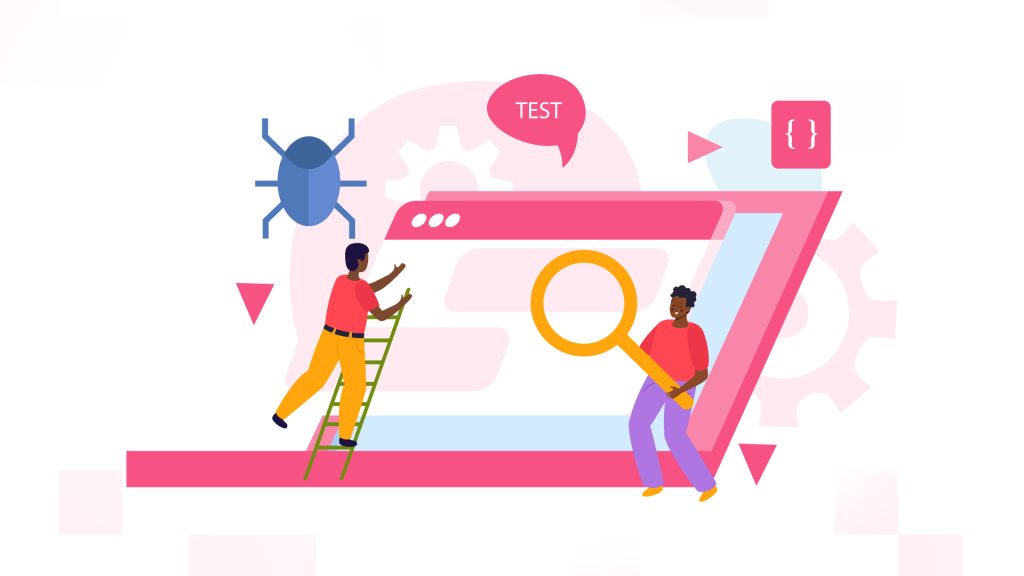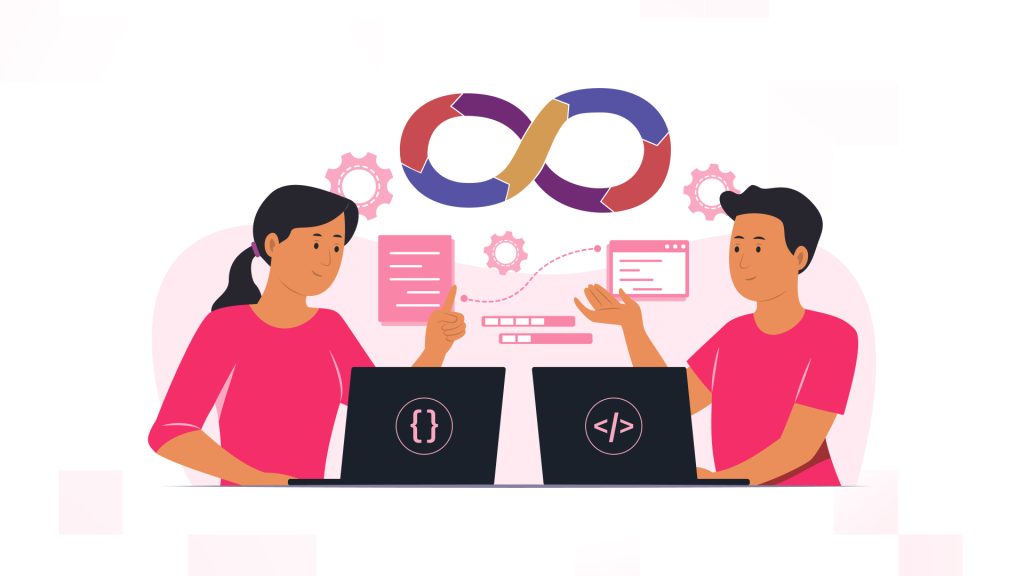AI Tools Transforming Software Development in 2025

Remember the fear? Just a year or two ago, the conversation around AI and software development was dominated by a single, anxious question: “Will AI replace us?” The headlines screamed of robots taking over, and developers felt the tremor of an uncertain future. But here we are in 2025, and the reality is a far cry from the dystopian predictions.
The revolution didn’t arrive with a bang; it arrived with a whisper, an invisible force quietly weaving its way into our daily workflows. AI hasn’t replaced developers. It has become their most powerful partner, a silent co-pilot steering the ship of innovation at an unprecedented speed.
This isn’t a future of machines taking over. It’s a present where developers, from seasoned veterans to fresh-faced beginners, are leveraging a new generation of AI tools to become faster, smarter, and more creative than ever before. So, for those who are curious about this transformation whether you’re in tech or not let’s take a look at the key AI tools that are not just changing how software is built but are fundamentally redefining the role of the developer.
The Code-Writing Assistants
The most visible and widely adopted AI tools are the ones that assist directly with writing code. These tools have moved beyond simple auto-completion to become intelligent partners that understand context and intent.
Generative AI for Code (e.g., GitHub Copilot, Amazon Code Whisperer)
These aren’t just for beginners anymore. They are ubiquitous. In 2025, a developer not using an AI code assistant is like a writer not using a word processor. These tools have matured from suggesting the next line of code to generating entire functions or classes based on a single comment.
- How They Work: You describe what you want in plain language (e.g., # Function to fetch user data from a database) and the AI generates the corresponding code. It learns from billions of lines of code to predict and write accurate, and increasingly secure, solutions.
- The Impact: This massively speeds up the development process, especially for boilerplate code and repetitive tasks. It frees up a developer’s mental energy to focus on the truly complex parts of a project, like system architecture and problem-solving. It’s no longer about manual keystrokes; it’s about guiding an intelligent agent.
Need a future-proof Ecommerce store or Mobile app?
Our Experts Can Help!
The Silent Debuggers and Testers

One of the most time-consuming and frustrating parts of software development is finding and fixing bugs. AI tools are now stepping in as tireless, meticulous quality assurance partners.
AI-Powered Debugging and Error Analysis
These tools do more than just point out syntax errors. They can analyze a program’s runtime behavior, predict potential bugs before they even happen, and even suggest fixes with high accuracy.
- How They Work: AI models are trained on massive datasets of code and associated bugs. When a developer’s code fails, the AI can analyze the error message, trace the problem back to its source, and suggest a likely solution based on patterns it has learned from similar issues.
- The Impact: This drastically reduces the time and effort spent on debugging. For a developer, this means less frustration and more time spent on feature development. It also leads to more robust and reliable software from the get-go.
Automated Test Case Generation
Writing effective test cases to ensure software works as intended is crucial but often tedious. AI is now automating this process.
- How They Work: An AI tool can analyze a piece of code and automatically generate test cases to cover all possible scenarios and edge cases. It can even create “unhappy path” tests to see how the software handles unexpected user input or errors.
- The Impact: This ensures higher code quality and fewer bugs making it into production. Developers can have greater confidence in their code, knowing that it has been thoroughly and automatically vetted.
The Project Managers and Architects
AI’s influence isn’t limited to the code itself. It’s now transforming the higher-level, strategic aspects of software development.
AI-Driven Project Management and Planning
AI tools are helping teams manage their projects more efficiently, predicting timelines, and identifying potential bottlenecks.
- How They Work: These platforms analyze a team’s past performance data, code complexity, and communication patterns to predict how long a new feature will take to build. They can automatically suggest sprint tasks, assign work based on a developer’s expertise, and provide early warnings about delays.
- The Impact: This leads to more realistic project deadlines and better resource allocation. It takes the guesswork out of project planning and allows team leads to make data-driven decisions.
AI for System Architecture and Design
Even at the highest level, AI is now assisting with designing the overall structure of software systems.
- How They Work: You can provide an AI with high-level requirements (e.g., “Build a scalable microservices architecture for a photo-sharing app that can handle 1 million users”) and it can generate a detailed diagram of the system, including recommendations for technologies, databases, and communication protocols.
- The Impact: This accelerates the initial design phase of a project, allowing architects to explore multiple design options in minutes instead of days. It also ensures that the proposed architecture is based on best practices learned from a vast corpus of successful projects.
Looking for a technical partner to help grow your Ecommerce store?
We Can Help
The Automated Security and Compliance Officers
One of the most significant and often overlooked areas of AI’s impact is in software security. With the proliferation of AI-generated code, the need for robust security is more critical than ever. AI tools are no longer just an afterthought for security audits; they are active guardians that work alongside developers throughout the entire process.
AI-Powered Static and Dynamic Analysis (SAST/DAST)
These tools act as tireless security experts, scanning codebases for vulnerabilities and ensuring compliance with industry standards. They’re far more advanced than the rule-based systems of the past.
- How They Work: AI-driven SAST (Static Application Security Testing) tools analyze source code before it’s even compiled, flagging potential issues in real-time. Similarly, DAST (Dynamic Application Security Testing) tools test the running application, simulating attacks to find security flaws that might only appear during runtime.
- The Impact: This proactive approach means fewer vulnerabilities make it to production, which reduces the risk of costly data breaches and reputational damage. By catching security flaws early, teams save immense amounts of time and resources.
AI for Dependency and Supply Chain Security
In modern software, applications rely on hundreds, if not thousands, of open-source libraries. Each can be a potential entry point for a malicious actor.
- How They Work: AI tools now actively monitor the software supply chain. They can scan all dependencies in a project, not just for known vulnerabilities but for unusual behavior. For example, an AI might detect that a commonly used library has had a new, potentially malicious piece of code added to it.
- The Impact: This level of security is almost impossible for a human to manage manually. These tools provide a critical layer of defense, ensuring that the software’s foundation is solid and secure.
The DevOps and Operations Orchestrators

AI’s role doesn’t stop once the code is written and tested. It is fundamentally reshaping the continuous integration and continuous delivery (CI/CD) pipeline, a critical part of the DevOps (Development and Operations) process.
AI-Driven CI/CD Optimization
The traditional CI/CD pipeline can be slow and inefficient. AI is streamlining this process, making it faster and more intelligent.
- How They Work: AI models can analyze historical build data and test results to predict which tests are most likely to fail or which parts of the codebase are most susceptible to bugs. This allows the AI to prioritize tests, running the most critical ones first and even skipping redundant tests to save time.
- The Impact: This leads to a faster, more efficient development pipeline. Developers get feedback on their changes in minutes instead of hours, which accelerates the pace of innovation and allows them to iterate more quickly.
AI for Observability and AIOps
Once software is in production, AI takes on the role of a tireless guardian, monitoring its health and performance.
- How They Work: AI systems can ingest and analyze the immense amount of data generated by applications logs, metrics, and traces. Instead of just setting static alerts, an AI can detect subtle, anomalous patterns that precede a system failure. For example, it might notice a slight, but consistent, increase in latency that indicates a future bottleneck.
- The Impact: AIOps is shifting the IT world from reactive to proactive. Instead of responding to a crisis after the fact, teams can anticipate and prevent issues, ensuring higher uptime and a better user experience.
The New Frontiers of AI-Native Development
As AI becomes more integrated, a new paradigm is emerging building applications that are inherently AI-driven from the ground up, not just for development but for the end user.
AI for Low-Code/No-Code Platforms
AI is not only assisting professional developers; it’s also democratizing software creation for non-programmers.
- How They Work: Low-code/no-code platforms use AI to help citizen developers build applications with little to no traditional coding. A user can describe a business process in plain language, and the AI will generate the necessary components and workflows.
- The Impact: This frees professional developers from the burden of building simple, internal tools. They can then focus their skills on building complex, mission-critical, and innovative software, while business users can handle their own simple automation needs.
The Rise of Agentic AI and Autonomous Software Agents
Looking ahead, we are seeing the first signs of agentic AI. These are systems that can not only generate code but can also reason, plan, and execute multi-step tasks to achieve a goal with minimal human intervention.
- How They Work: An agentic AI is given a high-level objective, such as “build a new user registration feature for our website.” The AI then breaks down the task into smaller steps, generates the code for each, and continuously learns and self-corrects based on the results.
- The Impact: This is the ultimate expression of the human-AI partnership. The developer becomes a supervisor and architect, defining the strategic goals and providing oversight while the AI handles the detailed, tactical work. This shift represents a move from building software to directing software creation.
The New Developer
The fear of replacement has given way to a new reality. The developer of 2025 is a master collaborator, a strategist who leverages AI to achieve extraordinary results. Their value no longer lies in their ability to manually write code from scratch, but in their ability to:
- Ask the Right Questions: Guiding an AI with a well-formed prompt requires a deep understanding of the problem.
- Critically Evaluate AI Output: AI-generated code isn’t always perfect. A developer’s expertise is crucial for reviewing, refining, and securing the code produced by a machine.
- Focus on the Human Element: With the tedious tasks automated, developers can dedicate more time to understanding user needs, designing intuitive interfaces, and tackling the truly unique, creative problems that AI cannot solve.
The software development profession hasn’t been eliminated; it has been elevated. AI is the tool that’s removing drudgery, freeing up the human mind to focus on what it does best: innovation, creativity, and empathy. The revolution is here, and it’s a partnership one that is making the impossible, possible.
 Shopify
Shopify










